When it comes to Halibut fishing, Alaska is the premier destination. It’s a bucket list state for a number of species, including Salmon, Rainbow Trout, and more. But Halibut stand out. They attract anglers from around the globe to test their strength. The fish grow to enormous sizes and have exceptional meat for freezing and eating. But that’s not all…

In this guide, I’m going to introduce you to the world of Halibut fishing in Alaska. I’ll go through what makes the fish stand out, the best ways to catch them, when to come to the “Last Frontier,” and much more. So let’s get started.
Halibut: An Introduction
Only a few varieties of Halibut exist around the globe. The Atlantic Halibut, Pacific Halibut, and California Halibut are the primary species. Pacific Halibut have a range extending from California to Alaska, with populations reaching the very northern edges of the Bering Sea.
California Halibut range farther south in the Pacific Ocean, with populations in California and Baja, Mexico. They are also referred to as Flounder and are much smaller than the Pacific Halibut variety.
Lastly, the Atlantic Halibut ranges from the eastern US coastlines to the far northern waters of Greenland and Iceland. There is a smaller variety called a Greenland Halibut in this range as well. The Atlantic Halibut reaches larger sizes than the Pacific Halibut.
Alaska: The Halibut Fishing Capital of the World
Alaska reigns supreme as a sportfishing destination, however, because of the robust Pacific Halibut population, their large size, and access to fishing charters in nearshore environments. With a long coastline and plenty of ports, you’ll find no shortage of opportunities to chase Halibut in Alaska.
Pacific Halibut Facts
Pacific Halibut are bottom-dwelling Flatfish with some unique features. They are very distinct, differing from most other species in their native range.
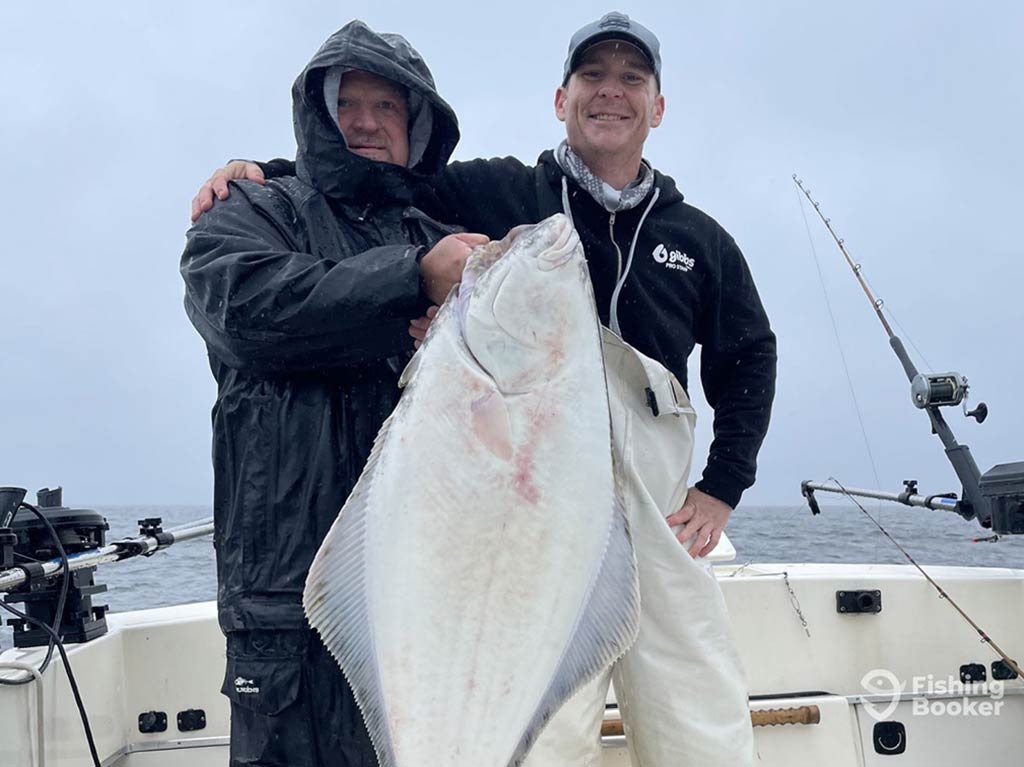
Size. New Halibut anglers are often surprised by the sheer weight of their catch. Fish over 100 pounds are not uncommon, and rare specimens will tip the scales at over 400 pounds! The largest Hali recorded was nearly 460 pounds, and there are certainly larger catches that went unrecorded. The majority of fish caught on charters will run in the 40+ pound range but there are plenty of big ones hauled in each year.
Characteristics. Juvenile Halibut are similar to most species with eyes on either side of the head. They also swim upright like most fish. But, after surviving their early life phase, one eye shifts alongside the other and they turn on the side to become a true Flatfish. Pacific Halibut hug the bottoms and their underside sees little light. As a result, the bottom is white in color while the top side is darker and often mottled for camouflage.
Diet. Halibut have a broad diet that changes as they grow. They eat organic matter – shrimp, crabs, bait fish, cod, and just about anything dwelling along the bottom where they live. The ability to camouflage and snatch unsuspecting prey makes them very effective at eating a wide range of species.
Alaska Halibut Fishing Seasons
Legal fishing seasons can vary from year to year but they’re generally open from late spring through early fall. In Alaska, most anglers arrive to fish during the peak summer season. The season often opens in mid-May but the late spring can bring rough conditions on many days.
June, July and August offer long days and optimal conditions. The season in Alaska usually extends into mid-September which is also an excellent time to continue pursuing Halibut. Spawning primarily occurs throughout the winter months, so Halibut fisheries are closed during this period.
Alaska Halibut Fishing Techniques
As a bottom-dwelling species, tackle and technique are critical for success. Although the occasional Halibut is caught while trolling or using traditional cast and retrieve techniques, most are caught right off or near the bottom. The depth depends on the topography, and many Halibut are caught at depths greater than 100 feet.
Fishing along the bottom is important but Halibut can elevate off structure to feed. Many successful captains will drop bait and lures to the bottom then bring them up anywhere from 10 to 30 feet. This helps to prevent snags on structure while keeping your hook in the feeding zone.
Rigging for Halibut
You can rig with a bait hook or a jig. When using a baited hook, weight is important to quickly reach the bottom. Circle hooks are the preferred option for bait fishing as they hold the bait well and tend to pierce the outer edge of the mouth.
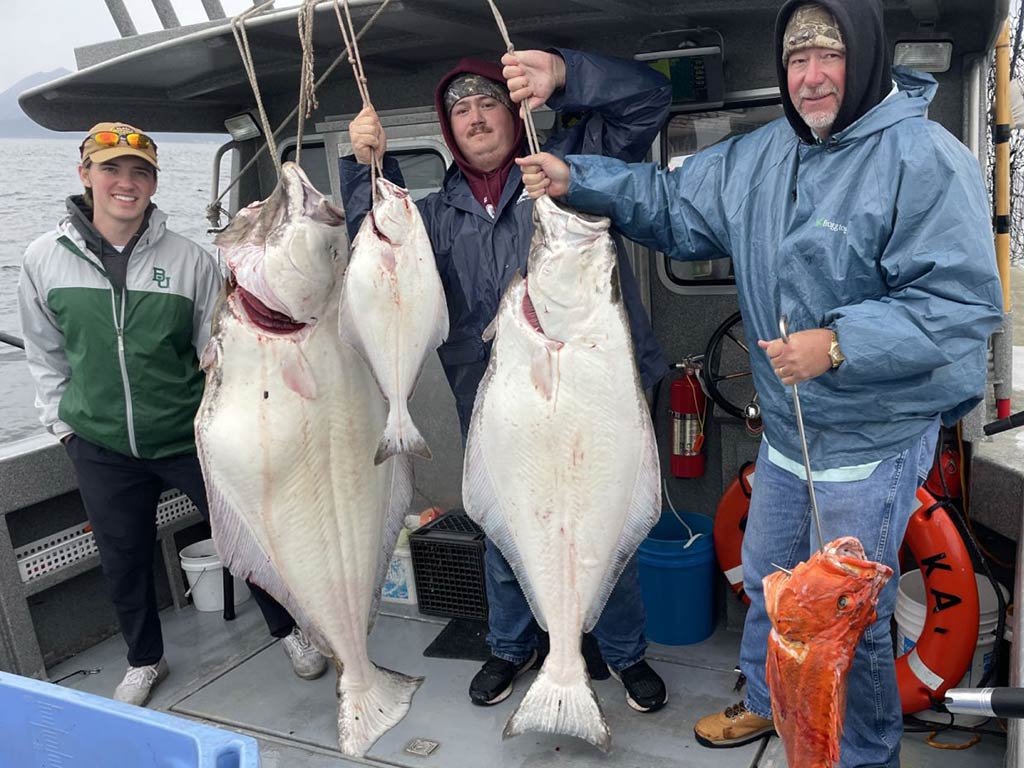
For rigging bait hooks, the primary line is attached to a swivel slider with a heavy weight. The line is tied to a swivel where a 20 lb fluorocarbon leader of several feet is tied to the hook. With this rig, the weight can sink quickly while the hook is spaced and suspended above the weight. It’s worth noting that many different variations of the weight and bait system are possible.
The alternative option is a jig hook. The jig is weighted and rigging it is very simple. Simply tie the main line to a heavy swivel and attach to your jig. Large plastic jigs imitating squid or octopus are popular. Halibut will eat the jig without bait but adding some bait to the tip increases your odds. Some jig hooks are even designed to take the bait without the soft plastic or hair-tied designs.
Favorite Baits
Halibut have a strong olfactory system and scent is important. That’s a major reason for the success of live bait when chasing them in Alaska. Octopus and squid are two favorite baits that are proven by many anglers. Herring is another great option and they are typically easy to source.
If you want to get creative, consider repurposing your salmon catch by using their heads as bait. But you’ll need a large hook for salmon heads. The heads are easy to find during summer in Alaska and they can catch some very large Halibut off the bottom.
While these are some of the favorite and most accessible baits, just about anything is worth trying. If you happen to have any fresh-cut bait, give it a try while Halibut fishing in Alaska.
Best Alaska Halibut Fishing Spots
The options for where to go Halibut fishing in Alaska are seemingly endless as Pacific Halibut range across most of the state. It’s almost worth planning a longer vacation to fit in all the Halibut fishing you want. Researching and sourcing a great captain in advance is also useful before traveling to a destination. But more on that later. Here are some top spots to consider for your trip:
Juneau

Ideally situated in a region with extensive bays, islands and sheltered coves, Juneau is a treasured destination for Alaskan tourism. Halibut fishing is one of the many attractions in Juneau with its glaciers, mountains, Salmon fishing and many more opportunities waiting too.
The city has immediate access to ports where charters are waiting. Knowing where the deep channels are located is important when trying to catch Halibut here.
Sitka
While Juneau has access to sheltered bays and channels, Sitka is quite the opposite. The town is located on the outer edge of the coastline and is adjacent to the open ocean. If you want to get offshore in pursuit of a true giant, consider Sitka. You’ll also find great hiking, Salmon fishing and a wonderful waterfront to enjoy in this charming town.
Seward
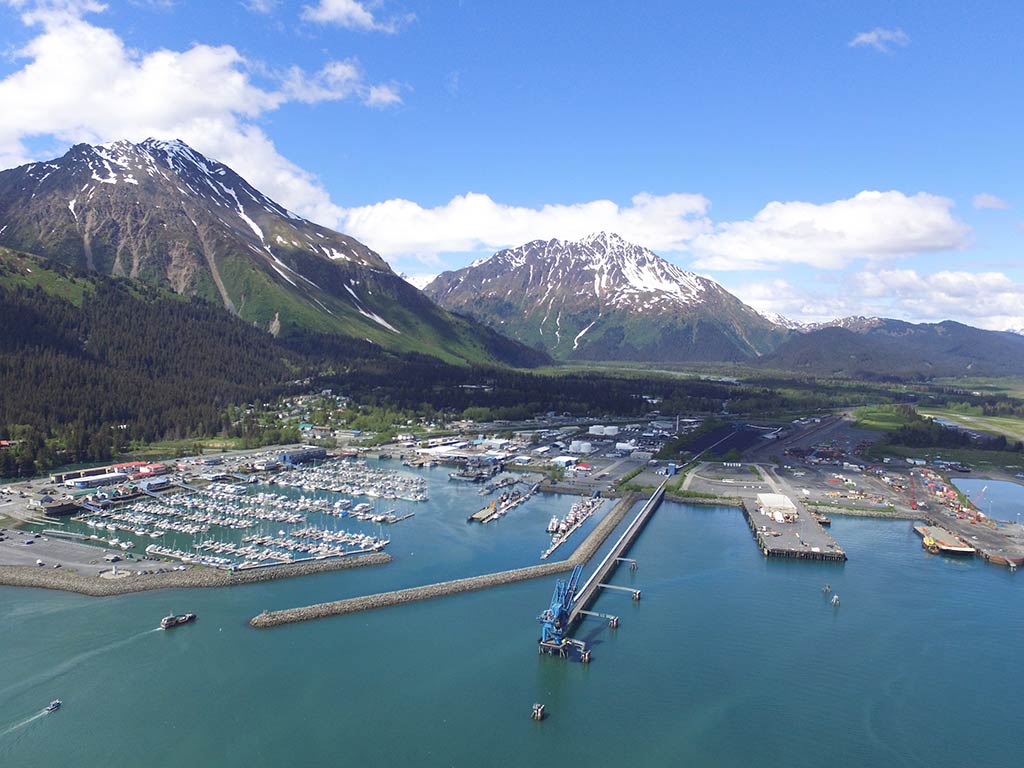
Farther north up the coastline is the Kenai Peninsula. Seward is a wonderful destination that’s highway-accessible on the southern end of the peninsula. If you want great Halibut fishing and some of the most dramatic scenery in Alaska, head in this direction.
Seward is positioned adjacent to Kenai Fjords National Park and your Halibut charter will likely fish in direct sight of the stunning mountains and coastline that falls within the park system. Fish over 100 pounds are caught from these waters each year.
Homer
Another great Kenai Peninsula destination is Homer. Located near the mouth of Kachemak Bay, it has easy access to the interior bay and the open ocean. The region has abundant populations and numerous charter options. Like Seward, it’s road accessible. You can fly into Anchorage, rent a car and explore this area on your own schedule.
Ketchikan
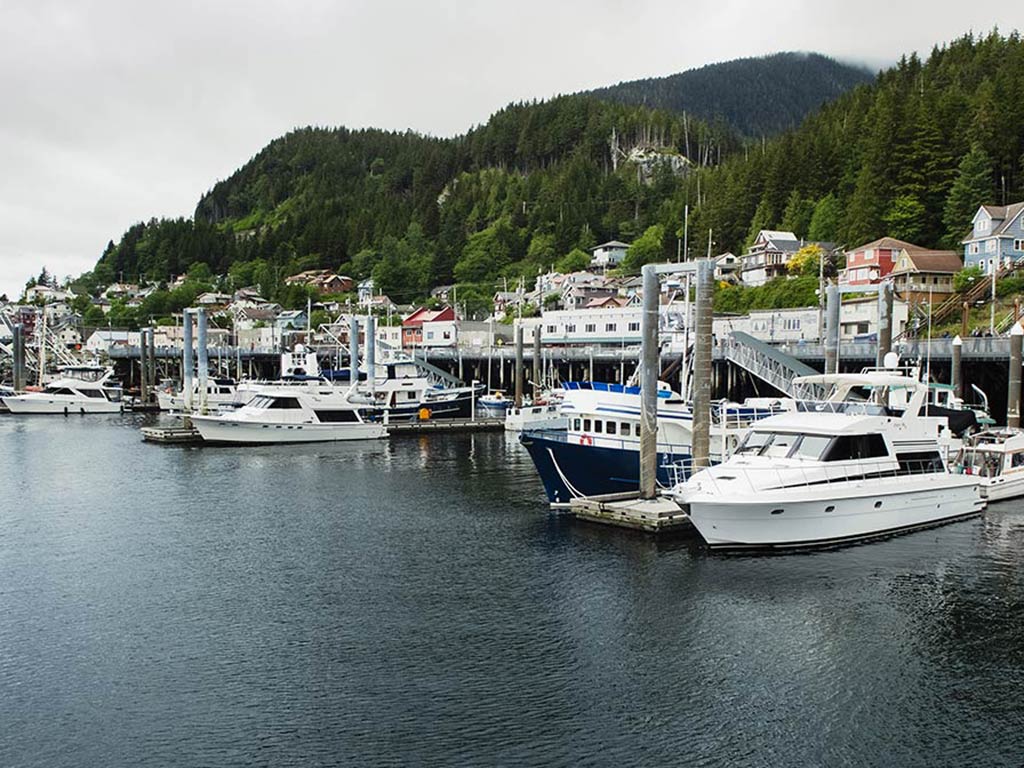
The far corner of southeastern Alaska is revered for Salmon. It’s therefore sometimes overlooked for Halibut. It’s a short flight from Seattle or Portland to this rugged coastline in the expansive Tongass National Forest. The coastal waters are nutrient-rich in this region and Halibut have excellent food resources to grow large.
Alternative Pacific Halibut Destinations
While Alaska offers some of the best Halibut habitats on earth, there are other locations to fish in the Pacific. British Columbia is adjacent to Ketchikan and offers very similar opportunities. BC is remote and, like Alaska, you’ll need to charter flights or ferries to reach many Halibut destinations.
As you move farther south along the coastline, the Halibut population become more sparse and regulations limit seasons. That said, you can still have good fishing in Washington, Oregon and California.
How to Plan an Epic Alaska Halibut Trip
Alaska isn’t a casual destination. You should do some serious planning before attempting a trip. First off, the seasons are critical and most trips will fall within the peak summer season. You can book a charter on short notice in many places but the best captains also sell out quickly. When possible, book well in advance to ensure you have a spot.
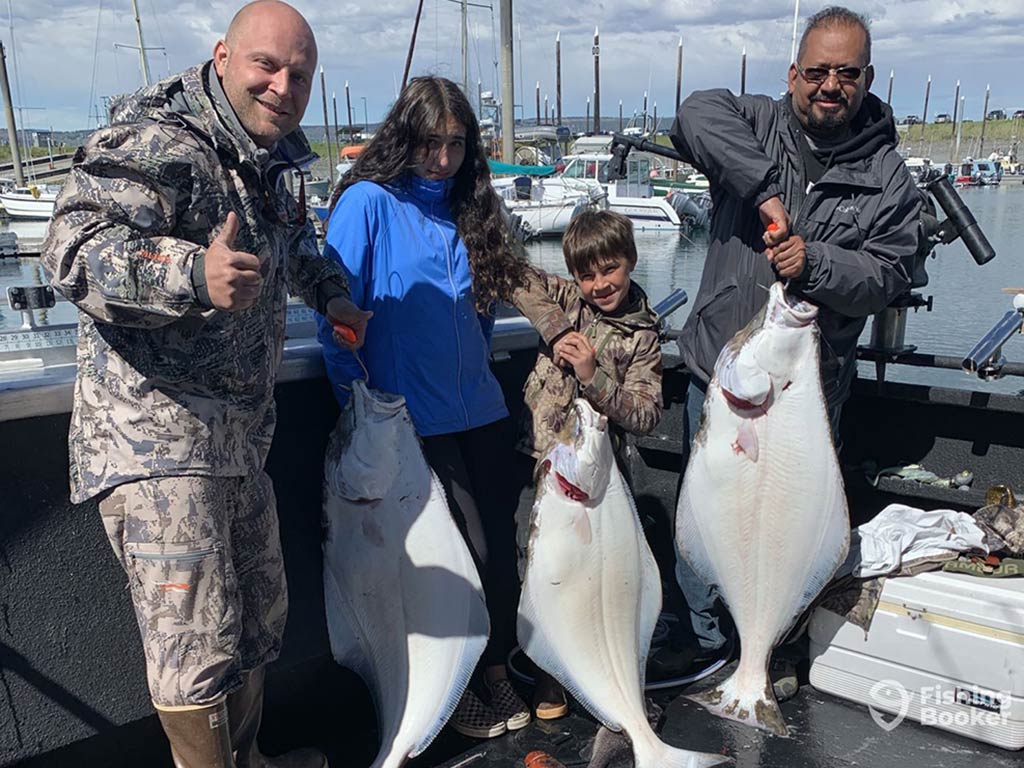
On many charters, multiple anglers will fish at the same time. If you have a group, booking the entire vessel to yourself creates a private setting. Sharing is typically fun, however, and you might meet a few interesting folks. The number of seats depends on the size and setup the captain decides on.
Communicate with the captain in advance to ensure you have everything you need. Most charters offer half and full-day options. They often also supply water and snacks on half-day trips. Full-day trips may supply lunches as well. The weather can change quickly in Alaska but the summer months offer many pleasant days with calm ocean conditions.
In any case, never forget:
- Alaska fishing license
- Warm clothing
- Rain gear
- Motion sickness medicine
- Camera
Renting a boat is another option but it’s less common. When renting, you’ll need to supply your own equipment, have a good understanding of the waters and have boating and safety skills. Only take this approach if you have the experience and confidence to take the trip.
Alaska Halibut Fishing: Your Epic Journey Awaits
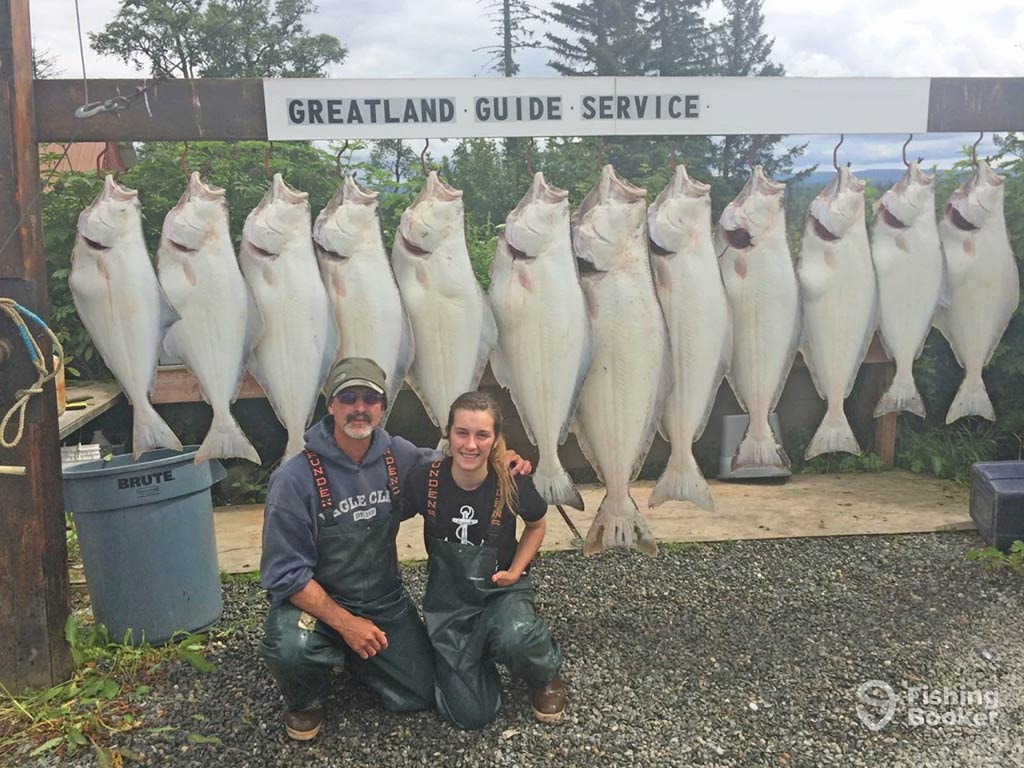
After making travel plans and booking your charter, get ready for a workout. Reeling in a big Halibut requires time and dedication, especially when fishing deep water. They are seriously heavy and you’ll need to fight hard before bringing a big one to the surface! But when you do, you’ll have one incredible story to tell. It’s time to get in on the action!
Have you ever been Halibut fishing in Alaska? Where did you go? We’d love to hear all about your experience in the comments below!
The post How to Go Alaska Halibut Fishing: An Angler’s Guide appeared first on FishingBooker Blog.
https://ift.tt/1IdSEBi
0 Comments
Enregistrer un commentaire